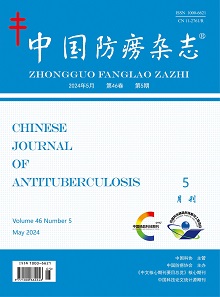Objective To explore the following parameter range of intravoxel incoherent motion-diffusion-weighted magnetic resonance imaging: perfusion fraction (f), pure diffusion coefficient (D) and pseudo-diffusion coefficient (D *), as well as its diagnostic value in diagnosis of patients with spinal tuberculosis (TB). Methods Eighteen patients with spinal tuberculosis, who were confirmed by pathological examination with clinical biopsy and surgical tissue specimens at the First Affiliated Hospital of Xinjiang Medical University from January to September 2018, were recruited as TB group, including 13 males and 5 females and the age ranged from 20 to 79 years old with an average of (40.39±14.84) years old. Among those patients, tuberculosis had involved 46 vertebral bodies in total, including 23 vertebral bodies in 5 cases with thoracic TB and 23 vertebral bodies in 13 cases with lumbar TB. In the same period, 18 volunteers with normal vertebral bodies were recruited as control group, which had the same gender composition ratio with the TB group, and the difference of its average age was within 5 years old compared to the TB group. All 36 cases in both TB group and control group received Signa 3.0 T MR routine scan and IVIM-DWI sequence scan (including spin echo sagittal T1WI, T2WI, lipostatic sequence scan, coronal axial T2WI sequence). A double exponential model post-processing software was used to obtain the IVIM quantifications of the cases in TB group (the diseased vertebral body, the jumping vertebral body, the intervertebral disc) and in control group (normal vertebral body, intervertebral disc). The IVIM model was used to calculate the parametric indicators (f, D, D*, etc.) of the cases in TB group and control group respectively and the results were compared by using SPSS 16.0 software. The non-normal distribution data were analyzed by rank-sum test. P<0.05 was regarded as statistically significant difference. The receiver operating curve (ROC curve) was used to analyze the maximum area under the curve, sensitivity, specificity and optimal diagnostic threshold of the parameters f, D and D * of the vertebral body. Results The f-value of the vertebral body in the tuberculosis group (12.91 (8.15, 22.73)%) was lower than that in the control group (37.16 (30.45, 47.07)%) (Z=6.841, P<0.001); the D value (0.88 (0.73, 1.40)×10 -3mm 2/s) and D * value (39.99 (20.15, 66.35)×10 -3mm 2/s) in the TB group was significantly higher than that in the control group respectively (0.07 (-0.12, 0.28)×10 -3mm 2)/s, 20.37 (12.26, 29.97)×10 -3mm 2/s) (Z=7.598, 3.842, Ps<0.001). The f value of TB vertebral body in the TB group was lower than that of two vertebral bodies in the control group (40.51 (33.75, 46.28)%) (Z=3.421, P=0.001); the D values were significantly higher than the latter (0.05 (-0.20, 0.15)×10 -3mm 2/s (Z=3.743, P<0.001; Z=1.730, P=0.042). The f value (6.72 (4.36, 11.53)%) and the D value (2.06 (1.92, 2.26)×10 -3mm 2/s) of the intervertebral disc in the tuberculosis group were higher than those in the control group respectively (5.72 (3.00, 7.85)%, 1.88 (1.79, 1.85)×10 -3 mm 2/s) (Z=2.276, P=0.023; Z=3.919, P<0.001). The maximum area under the curve of D value which obtained from the ROC curve was 0.960, the sensitivity was 95.74%, the specificity was 87.56%, and the optimal diagnostic threshold was 0.63×10 -3 mm 2/s. Conclusion IVIM-DWI can quantitatively evaluate the diffusion and microvascular perfusion characteristics of diseased water molecules. Through analysis of the range of quantitative parameter (f, D and D *) value in IVIM, D value has the highest sensitivity and specificity in the diagnosis of spinal tuberculosis, which provides a valuable reference for clinical diagnosis of spinal tuberculosis.

 Wechat
Wechat